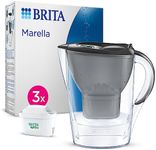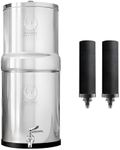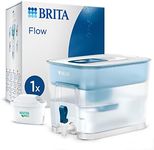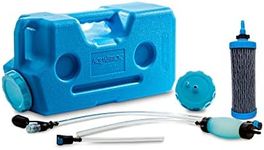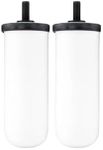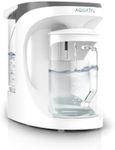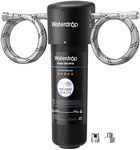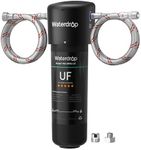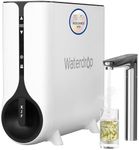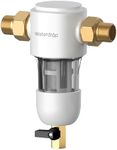Buying Guide for the Best At Home Water Purifier
Choosing the right at-home water purifier is essential for ensuring that you and your family have access to clean, safe drinking water. There are various types of water purifiers available, each with different features and specifications. Understanding these specifications will help you make an informed decision based on your specific needs and preferences.Filtration TechnologyFiltration technology refers to the method used by the purifier to remove contaminants from the water. Common types include reverse osmosis (RO), ultraviolet (UV), and activated carbon filters. RO systems are highly effective at removing a wide range of impurities, including heavy metals and dissolved salts, making them ideal for areas with hard water. UV purifiers use ultraviolet light to kill bacteria and viruses, which is great for areas with microbiological contamination. Activated carbon filters are excellent for removing chlorine, bad odors, and organic compounds, making them suitable for improving taste and smell. Choose the technology based on the specific contaminants present in your water supply.
CapacityCapacity refers to the amount of water the purifier can process and store at a time. This is important because it determines how much purified water is available for use. Smaller units with a capacity of 5-10 liters are suitable for small families or individuals, while larger units with a capacity of 10-20 liters are better for bigger families or households with higher water consumption. Consider your daily water usage and the number of people in your household when selecting the right capacity.
Flow RateFlow rate is the speed at which the purifier can process water, usually measured in liters per hour. A higher flow rate means faster purification, which is beneficial for households with high water demand. Flow rates can vary from 10 liters per hour to over 50 liters per hour. If you have a large family or frequently need large amounts of purified water quickly, opt for a purifier with a higher flow rate. For smaller households or less frequent use, a lower flow rate may be sufficient.
Maintenance RequirementsMaintenance requirements refer to the frequency and type of upkeep needed to keep the purifier functioning effectively. Some purifiers require regular filter changes, UV lamp replacements, or cleaning. It's important to consider how easy it is to perform these maintenance tasks and the availability of replacement parts. If you prefer a low-maintenance option, look for purifiers with longer-lasting filters and minimal upkeep. For those who don't mind regular maintenance, more complex systems might offer better purification but require more frequent attention.
Certification and StandardsCertification and standards indicate that the purifier has been tested and meets certain quality and safety benchmarks. Look for certifications from reputable organizations such as NSF, WQA, or ISO. These certifications ensure that the purifier effectively removes contaminants and is safe for use. Choosing a certified purifier provides peace of mind that the product has been rigorously tested and meets high standards for water purification.
Installation TypeInstallation type refers to how the purifier is set up in your home. There are countertop, under-sink, and wall-mounted options. Countertop purifiers are easy to install and move, making them ideal for renters or those with limited space. Under-sink purifiers are more discreet and save counter space, suitable for permanent installations. Wall-mounted purifiers are convenient and save floor space, perfect for kitchens with limited counter space. Consider your kitchen layout and whether you prefer a temporary or permanent installation when choosing the installation type.

